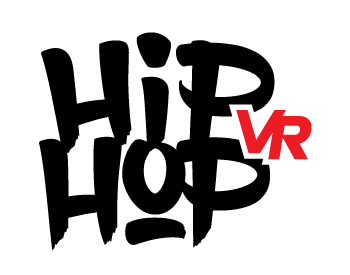Mr. Wave: “In one hour I became Mr. Wave”
Before the Internet, before TikTok was popular, a kid in the Bronx made his body move like electricity. Tony Wesley, best known as Mr. Wave in the New York City Breakers and the movie “Beat Street,” helped turn hip-hop into a worldwide language.
In a conversation with Chuck “Jigsaw” Creekmur and DJ Thoro, he reflects on the moment Dr. Electric became Mr. Wave, his Bronx block party days, and the red screen audition that changed his life.
Chuck Creekmur: First of all, thank you for your contribution to this culture. When we saw you dancing, we said, “What? We didn’t think he had a bone.” How did you develop this style?
Mr. Wave: To be honest, it starts with appreciation. We didn’t have much – just a black and white TV. I would watch Michael Jackson cartoons and see him in “Dancing Machine.” That’s amazing. In the early eighties, my name was “Dr. Electric” because I lived in an electric boogaloo. I’m also into pantomime and creating illusions. Floating and gliding are really techniques and illusions: lift one side, move the other.
When I saw everyone ticking the boxes, I decided to smooth it out. I combined clicks, boogies, vibrators, pantomime sounds…and that became the “wave.” I gave my whole body to it. That’s what makes it special.
DJ Thoro: So, how did Dr. Electric become Mr. Wave?
Mr. Wave: That’s the crazy part. One day I went to Delancey Street with my man Asa. We just bought some sheepskin and ironed “Dr. Electric” on my jacket. This kid on a motorcycle — Kid Ness from the New York City Breakers — said, “Yo, we’re dancing for Katherine Dunham and the Kennedy Center Honors Presidential Audition (1983). Come on.”
I had always been a rebel at home, so I went for it. The room was packed with people—Popmaster Fabel, Norm Ski, Mr. Wiggles—all legends in training. Agents looked on. I went to a corner and said, “I’m going to combine everything I know.”
Michael Holman, the coach of the Vandals, discovered me. He pulled me into the hallway with Chino, the founder, and said, “We want you to join our team.” I said, “Cool.” We went back; they announced it; everyone applauded. Then Kino said: “You are too smooth, we will rename you Mr. Bo.”
This all happened within an hour. That’s it—Dr. The electricity disappeared and Mr. Wave was born.
Chuck Creekmur: What New York was like back then—the years before everything exploded
Mr. Wave: From ’81 to ’84 was a real evolution. It’s a block party, a jam in the projects. You’ll spend hours watching them set up – no fighting, no craziness. When the DJ finally starts up, your chest jumps from the bass. The concrete vibrated several blocks. You don’t need flyers; you can hear the party sounds, like the ice cream truck.
Every jam has its moments for women, too. You have to keep them dancing all night long. This is what makes culture whole. Everyone has their own style: B-boy, B-girl, MC, DJ. And there are so many staff. People only mention the big ones, but every neighborhood has a team.
DJ Thoro: You always look different than everyone else—never wearing a one-piece suit. Why?
Mr. Wave: Because of where I’m from. I’m from the 9th Ward of the Bronx. I can’t go back to my neighborhood in tights! No disrespect to gymnasts, but I have to think about survival. Michael Holman understands this. He said, “We’ll make you tailor-made suits from Adidas and Puma.” They tied them really tight so I could move. This look became part of my style—it made the waves flow so much better.
Chuck Creekmur: Michael Holman gets a lot of credit for building bridges around the world. What has he done for everyone?
Mr. Wave: Michael is a liaison. He helped everyone from the Breakers to Rock Steady to Jazzy Jay. He saw the future of hip-hop. He even found us a lawyer. In 1984 we were making $10,000 per show, split equally among the members. We split up – three to attack one country, four to another. We are one of the highest paid dance companies in the world.
Chuck Creekmur: So you were already sexy, and then Beat Street happened. How did this come together?
Mr. Wave: We just performed for President Reagan at the Kennedy Center. On the plane back, Michael Holman said, “As soon as we land, we’re going to the Roxy—Harry Belafonte wants you to go to Beat Street.”
We got there and walked past thousands of dancers waiting to audition. Behind the red curtain are Belafonte, his daughters and producer David Peake. Harry said, “I know you just got back, but can you dance for me?” We performed and he said, “Congratulations, you’re the Beat Street Breakers.” No auditions, no lines — that’s it.
DJ Thoro: Why are you called Beat Street Breakers and not New York City Breakers?
Mr. Wave: Because Harry Belafonte saw this movie as a love story first and a hip-hop story second. He prefers dancing to names. He wanted it to be universal. He’s not wrong—his vision was to globalize hip-hop. Beat Street showcases every element: B-boys, DJs, MCs, graffiti writers. It’s a combination of culture and storytelling.
Chuck Creekmur: Looking back now, how do you feel about what was created during that era?
Mr. Wave: This is amazing. We had no idea we were making history; we were just kids trying to out-dance each other. But those riffs, that energy, the way people come together – that’s the foundation of hip-hop. You can’t erase it.
Find Part 2 of Mr. Wave only on AllHipHop


